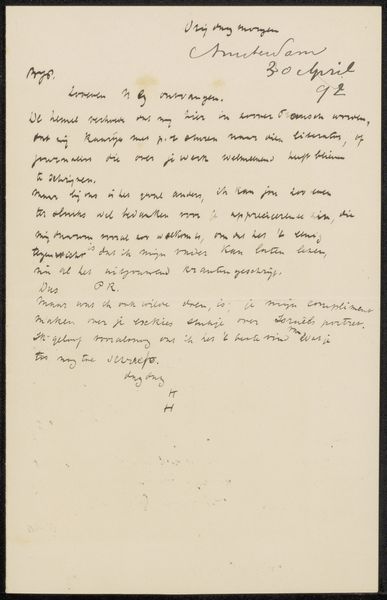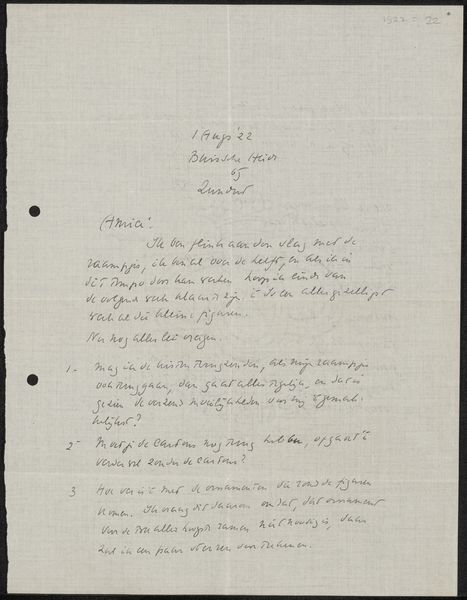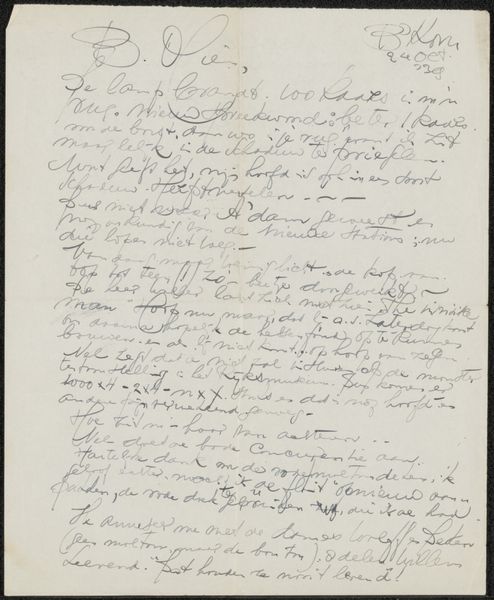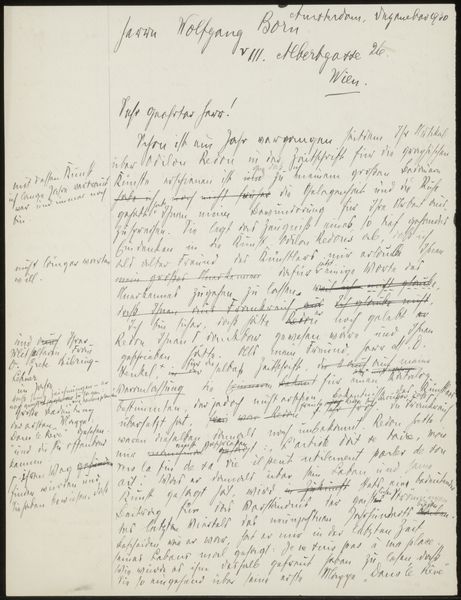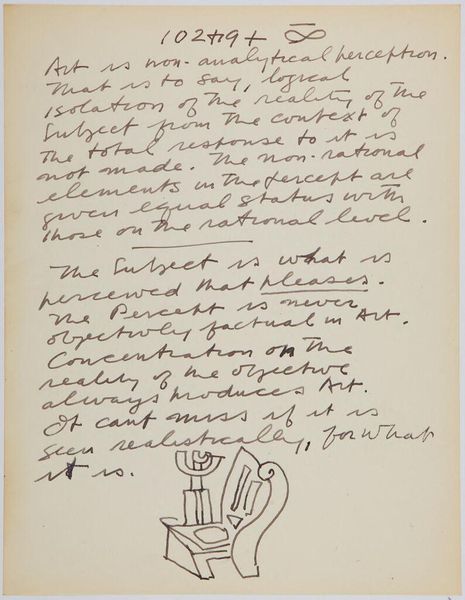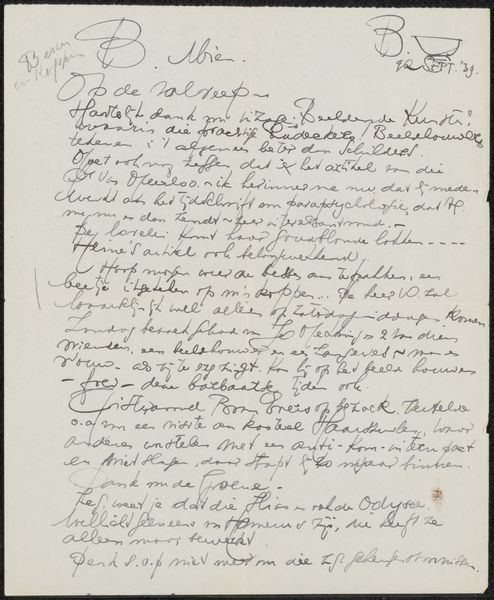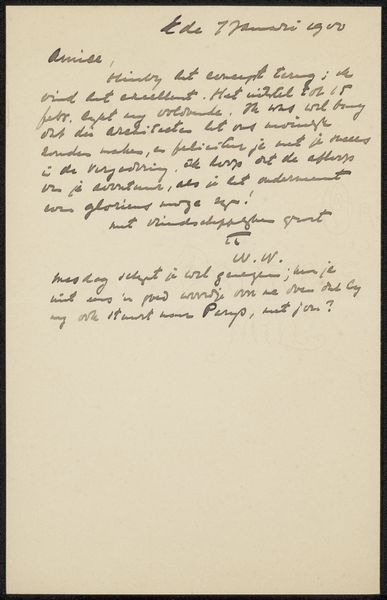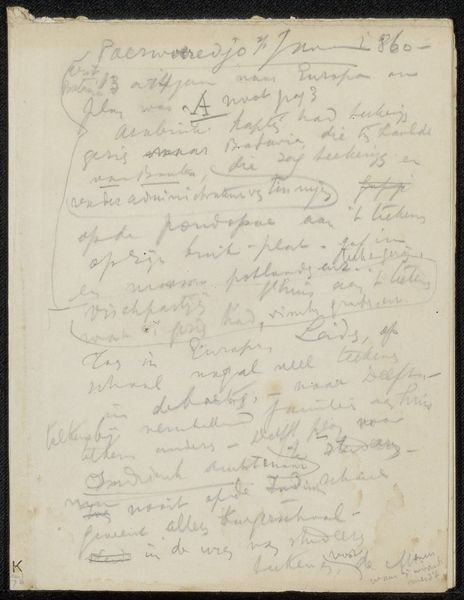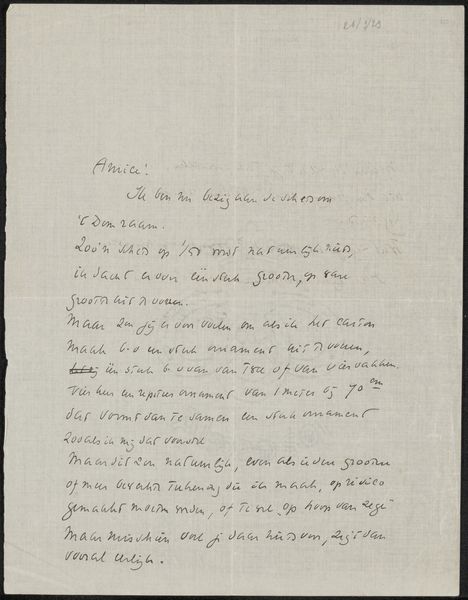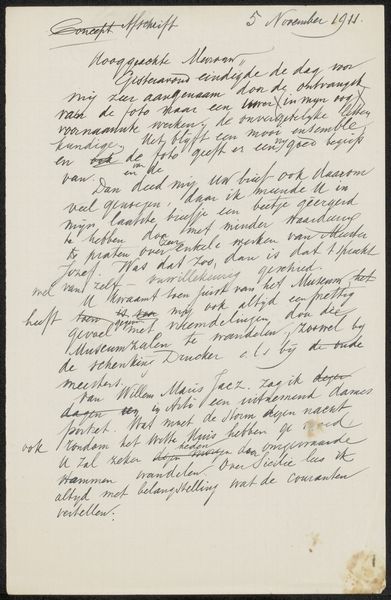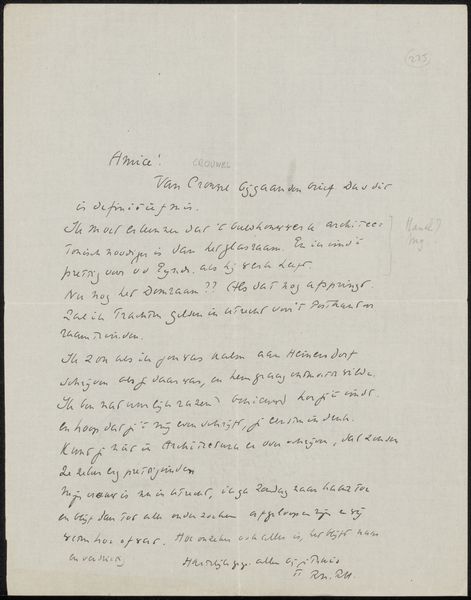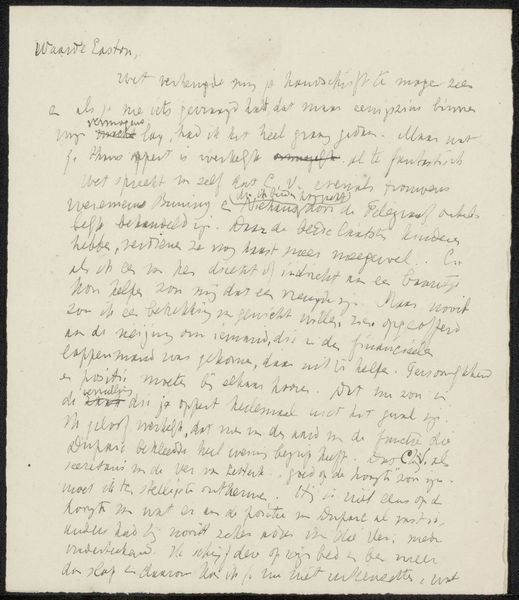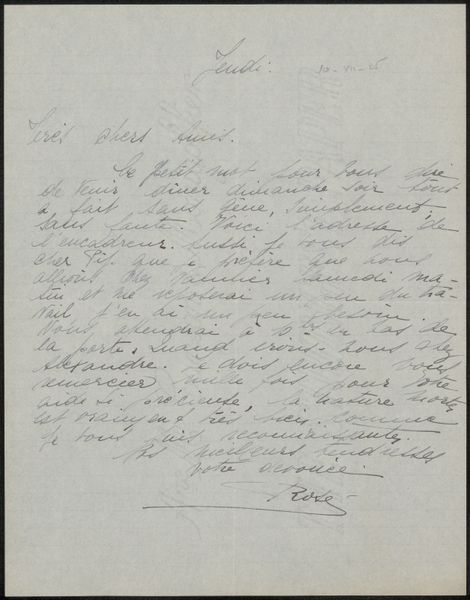
drawing, ink, pen
#
portrait
#
drawing
#
comic strip sketch
#
pen sketch
#
caricature
#
figuration
#
personal sketchbook
#
ink
#
idea generation sketch
#
sketchwork
#
ink drawing experimentation
#
pen-ink sketch
#
sketchbook drawing
#
pen
#
storyboard and sketchbook work
#
sketchbook art
#
modernism
Copyright: Rijks Museum: Open Domain
Curator: This sketch, entitled "Brief aan anoniem," comes to us from the hand of Willy Sluiter. Although undated, records indicate it may have been drawn somewhere between 1940 and 1942, done in ink and pen on paper. What strikes you right away? Editor: Well, it feels...almost frantic. The scrawled handwriting, the mix of text and caricature, give the impression of a mind rapidly processing information and emotion. Curator: Sluiter was quite active during the German occupation of the Netherlands. Do you think this artwork may somehow capture his state of mind at the time? Editor: Absolutely. The “letter to anonymous” title, paired with caricatures of stern-faced figures—they almost resemble authority figures—suggests resistance. Sluiter couldn't express dissent openly, so instead encoded it within his art. Note the little wine glass figures with tiny little breasts also, and that those are being spilled to some degree. What does that conjure? Curator: An almost manic level of activity is conveyed here in the sketch: frenetic energy on paper. It really encapsulates something that would feel almost coded because it comes in the form of a letter. And you make an excellent point; spilling out from its edges, what feels "hidden in plain sight," also helps to reinforce how this era impacted Sluiter. Editor: Exactly. The use of caricature is potent here. It diminishes these figures, renders them absurd, strips away their power through satire. We should keep in mind, the political and social function caricature has throughout history in the process. Curator: It’s an act of defiance but done subtly enough, within the bounds of what could be communicated and hidden. There are levels to these caricatures, with different groups and types of symbolism. In a broader sense, he challenges the imposition and overreaching power and impact they have through coded messages, almost like resistance that exists through gossip or rumors, as opposed to public proclamations. Editor: That tension between overt control and subversive expression really defines this moment. The personal, the political, all swirled together onto one page. It gives a look at his concerns, whether expressed to this anonymous receiver or as thoughts he couldn't safely say to those figures in power, during those historical constraints. Curator: Absolutely, understanding those constraints makes even these simple lines so full of tension. Editor: Precisely! It goes to show that even in periods of oppression, art finds a way to speak truth to power, often in coded languages.
Comments
No comments
Be the first to comment and join the conversation on the ultimate creative platform.
